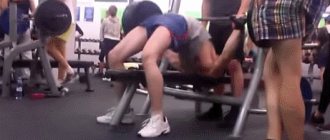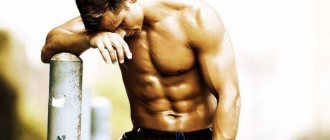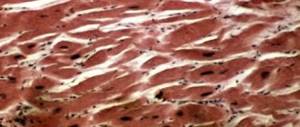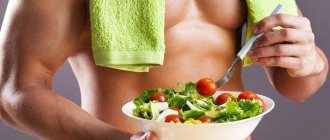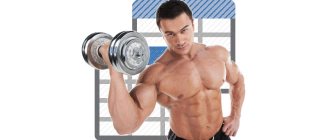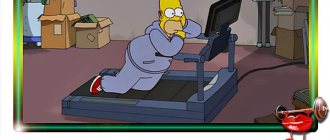Many people consider muscle pain a prerequisite for muscle growth. The scheme is simple: muscle fibers become damaged, the body speeds up protein synthesis to repair them, and at the same time builds up a little more to protect against subsequent stress.
If this theory is correct, after each workout a person should experience pain, otherwise the load was insufficient and needs to be increased. In fact, this approach can lead to the opposite effect for several reasons:
- Delayed muscle soreness reduces your ability to produce force, so you can do less in your next workout.
- Constant pain tires you and reduces your motivation to exercise.
- Inadequate load can lead to overtraining and severely impact your performance.
New research is gradually emerging that shows that there is no connection between repairing muscles after injury and their subsequent growth. And although science does not yet provide a definitive answer to this question, there are reasons not to consider pain the only indicator of a good workout.
Why muscles grow and how they are damaged
Repeated muscle contractions during exercise cause mechanical stress. It starts the process of adaptation of the body to the load - it gives a signal for the completion of fibers. The more tension you can create, the more stimulus your body will have to grow.
But if the load is too high or the muscles are not ready for it, their fibers are damaged, inflammation and swelling increase, the tissue compresses the receptors in the muscles and you feel pain.
Thus, mechanical stress is to blame for both muscle growth and muscle damage.
However, these are two different processes that can occur either simultaneously or separately from each other.
Causes of muscle pain
I'll tell you a terrible secret. Lactic acid is not the cause. More precisely, it is not the cause of the aches that appear the next day after visiting the gym. And let the adherents of this theory throw tomatoes at me. Yes, that's right, acid is formed during intense physical activity. And it appears because during muscle work, active breakdown of glucose occurs in the body. Glucose is the main source of our energy. But acid is a product of its breakdown.
Lactic acid is eliminated from the body quite quickly. Larger amounts during exercise, leftovers within an hour after. Acid causes an unpleasant burning sensation, but these are precisely the sensations that come during approaches and can persist for some time afterwards. The best way to get rid of them is to take a hot bath.
The real cause of the aches that come the next day is micro-tears in muscle fibers. Don't be afraid of them. This is an important part of the muscle growth process.
The body, in response to such microdamage, begins to actively recover and increase the number of muscle fibers. This growth occurs precisely at the moment of recovery, and not at the time of work. That's why it's so important to cool down at the end of your workout for a smooth transition to recovery. And after class, you definitely need to give your body a rest.
But be careful not to confuse such pain with injury. Moderate pain is good; too much pain is a cause for concern.
Why recovery and muscle building are not the same thing
There is several evidence for this theory, both scientific and empirical.
Increased protein turnover after injury does not cause hypertrophy
After damage, protein turnover in humans is stimulated: both production and breakdown. It is believed that this helps build muscle fibers. However, there is also the opposite point of view: protein turnover increases not to increase their volumes, but to repair damage.
Due to increased breakdown, the body cleans out damaged parts of muscle fibers, and thanks to synthesis, it restores them or grows them back.
The body simply fixes what has been broken, and this has no effect on the creation of new muscle fibers.
This assumption was confirmed in the study Resistance training-induced changes in integrated myofibrillar protein synthesis are related to hypertrophy only after attenuation of muscle damage. Scientists have found that increased protein turnover in the early stages of strength training, when muscle damage is greatest, does not lead to muscle fiber hypertrophy.
Eccentric exercises may not cause pain
Eccentric exercises are those in which the muscles are stretched under load; concentric - when they contract. For example, if you pump your biceps with dumbbells, then raising your arms is the concentric phase, and lowering your arms is the eccentric phase.
Some studies show Skeletal Muscle Remodeling in Response to Eccentric vs. Concentric Loading: Morphological, Molecular and Metabolic Adaptations that eccentric training causes greater muscle growth than concentric training. At the same time, they create severe delayed muscle pain.
However, eccentric training may not cause pain.
This was confirmed by the study Muscle damage and muscle remodeling: no pain, no gain? with two groups of participants. One of them worked out on an eccentric ergometer for three weeks for 5 minutes, and then began an eight-week program of more serious training for 20 minutes.
The second group immediately began the main loads, without preliminary preparation. And as a result, people in it experienced muscle pain, but in the first one they did not. At the same time, everyone increased their muscles and strength equally.
Activation of progenitor cells does not increase the number of nuclei in muscles
After muscle damage, activation of progenitor cells increases. It is believed that this leads to the creation of new nuclei in muscle cells and, as a result, the appearance of new fibers.
However, a study of Early- and later-phases satellite cell responses and myonuclear content with resistance training in young men refuted this dependence. It turned out that at the beginning of a strength program, when muscle damage is the most severe, the number of nuclei does not increase, despite the activation of precursor cells.
Is the absence of pain good or bad for muscle growth?
Scientists in the field of sports do not connect the appearance of muscle pain with a subsequent increase in strength and muscle mass gain.
Sometimes pain does not allow training; a person is uncomfortable and cannot concentrate on the exercise.
It is better to focus on the following factors:
- Intensity and volume of training;
- Nutrition;
- Recovery.
If you build the right training plan, adjust your diet and remember to rest, muscle mass will begin to increase even in the absence of pain after exercise.
